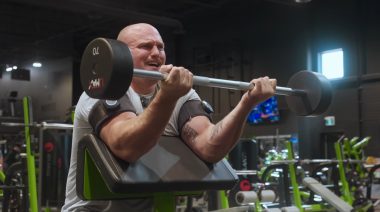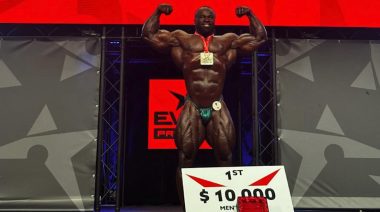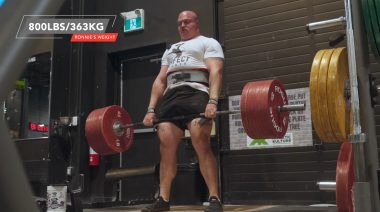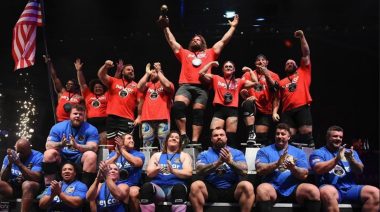On April 19, 2022, International Federation of Bodybuilding and Fitness (IFBB) Pro League bodybuilder Shaun Clarida showed his endurance during another pivotal off-season workout. To test his stamina and attain a “muscle pump,” the former 212 Mr. Olympia Champion (2020) crushed 150-pound incline dumbbell presses for a staggering 20 reps.
Check out the lift below — where Clarida is wearing a lifting belt and wrist straps — via his Instagram profile:
View this post on Instagram
[Related: Bodybuilder Hunter Labrada Powers Through A 495-Pound Banded Squat For 17 Reps]
Behind the Pump
Clarida’s thought process behind working out for a massive “muscle pump” isn’t a new concept for professional bodybuilders. To compete at the highest levels of a strength sport that focuses on physiques, the “pump” might even be necessary.
The pump occurs for an athlete when their bodily fluids (mainly blood and water) accumulate in whatever muscle they’re contracting. When lactic acid begins to build up in a working muscle, it attracts water. Meanwhile, your heart accordingly pumps more blood to an area that needs attention — like, say, an activated muscle — to give it the power and strength it needs at that moment. (1)
This influx of fluids ultimately gives muscles that temporary swollen “pumped” look. This appearance is understandably appealing to bodybuilders working on the aesthetic of their bodies in competition, as the pump can make their muscles appear more full and dense.
Research shows that there are hypertrophic (or muscle growth) benefits behind the muscle pump, too. Though, that benefit comes with important caveats.
While athletes can grow their muscles and get stronger by working for a pump, a study maintained that their workout selection must be judicious. The lift must be challenging and extended enough to keep the targeted muscles under consistent tension. Essentially, the athlete cannot allow those muscles to relax during a set. (2)
Likewise, a challenging, high-repetition, low-rest workout shouldn’t necessarily be the sole focus of a routine aiming for a muscle pump. Any athletes with such an aim — such as bodybuilders — might do well to implement their “pump training” after a strength routine that centers around heavier compound lifts, like the bench press. (2)
A seasoned bodybuilding pro, Clarida assuredly understands how to prepare his body for competition. He may well follow his recent pump training by sharing intensive, low-rep strength workouts soon.
The Road to Mr. Olympia
Clarida has spent most of his professional bodybuilding career in the 212 Mr. Olympia division, but by December of 2022, that could change. While the 40-year-old remained in the 212 division during the 2021 Mr. Olympia — where he finished in second place to Derek Lunsford — he did compete in and won the Open division at the 2021 Legion Sports Festival roughly two months prior.
Clarida has not yet clarified where he will compete during the 2022 Mr. Olympia, which will take place on December 15-18, 2022, in Las Vegas, NV. With a little under eight months until the competition, there’s likely no rush.
Whichever competitive division Clarida does choose, he probably won’t neglect his muscle pump in training.
References:
- Casey, D.P., Hart, E.C. (2008). Cardiovascular function in humans during exercise: role of the muscle pump. The Journal of Physiology. 2008 Nov; 586 (Pt.21): p. 5045–5046.
- Schoenfeld, B.J., Contreras, Bret. (2014). The Muscle Pump. Potential Mechanisms and Applications for Enhancing Hypertrophic Adaptations. Strength and Conditioning Journal. 2014 Jun; Vol. 36 (3); p. 21-25.
Featured image: @shaunclarida on Instagram






